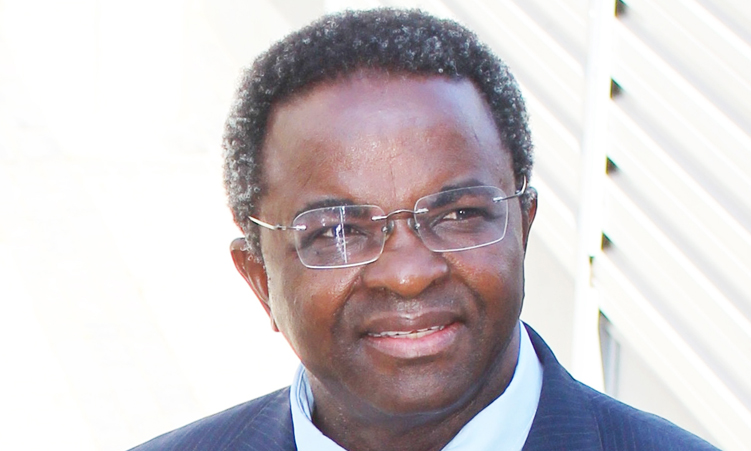Omanyano ovanhu koikundaneki yomalungula kashili paveta, Commisiner Sakaria takunghilile
Veronika Haulenga
Omanyano ovanhu koikundaneki yomalungula kashili paveta, Commisiner Sakaria takunghilile
Veronika Haulenga
Listeners:
Top listeners:
-
play_arrow
Omanyano ovanhu koikundaneki yomalungula kashili paveta, Commisiner Sakaria takunghilile Veronika Haulenga
South Africa is short of academic statisticians: why and what can be done


Solstock
Inger Fabris-Rotelli, University of Pretoria; Ansie Smit, University of Pretoria; Danielle Jade Roberts, University of KwaZulu-Natal; Daniel Maposa, University of Limpopo; Fabio Mathias Correa, University of the Free State; Michael Johan von Maltitz, University of the Free State, and Sonali Das, University of Pretoria
Our world is awash with data. A 2019 article published by the World Economic Forum estimated that, by 2025, about
463 exabytes of data will be created each day globally – that’s the equivalent of 212,765,957 DVDs per day.
But data is only useful if it can be collected, analysed and explained by experts. That’s where statisticians come in. People like us are trained to make sense of data. Our analyses can then guide organisations and governments in making sensible policy decisions.
Both “data scientist” and “statistics lecturer” feature on the South African government’s critical skills list. Due to the large increase in data available, skilled analysts are needed more than ever before. And so are the academic statisticians needed to train those analysts. Industry’s huge need draws graduates, but this limits academia’s capacity.
We are a group of academic statisticians from South African universities who have compiled a discussion paper to address these issues. We have identified the factors contributing to the capacity crisis in academic statistics, including a lack of collaboration between academics in different academic statistical fields. We’ve also proposed a way to improve both the quality and quantity of, primarily, doctoral candidates in the various statistical fields.
What’s in a name?
There are many “statistical” fields in academia. These include operations research, data science, business mathematics, econometrics and biostatistics. Over the years, a divide has emerged between those who research and lecture in applied statistics and their counterparts in mathematical or theoretical statistics.
Statistics departments are positioned within different faculties across various
South African universities, for example within commerce, natural science, or engineering. Sometimes they are stand-alone entities outside these faculties, such as in biostatistics within health sciences or psychometrics within social sciences. Other institutions merge statistics departments with others like operations research, data science, mathematics or acturial science.
Now, as one discussant in our paper pointed out, it is time for statisticians to put aside their disciplinary differences. Instead they must identify commonalities in their fields. In this way academic statisticians can come together to build a network of expertise that can support the development of young academics across these imagined divisions.
This view was echoed by the wide range of statisticians we consulted who work outside academia in various industries. One said that naming conventions of degrees might narrow the pool of those in industry who could provide purpose, guidance and mentoring for PhD candidates in statistics. A doctoral candidate focused on econometrics may not realise that a biostatistician is well equipped to support and mentor them.
Assessment
We also identified the need to standardise assessment across statistics PhDs in South Africa. Currently every university sets its own criteria. There may be concerns that standardising assessment for what is essentially creative output (novel, innovative ideas) may be too prescriptive. However, we believe that a semi-flexible assessment rubric is vital. This will help to develop high-quality doctoral graduates. It will also guide early-career supervisors to develop the correct goals for their students.
An assessment rubric is an important tool for formative assessment. It allows students to monitor what will be expected of them. It also ensures consistency and fairness in how statistics research is assessed.
A standardised, transparent rubric will also allow institutions across South Africa to maintain similar standards for their statistics PhD candidates. Those graduates can then move easily across institutions and industries across the country.
Supervisor-student relationship
Another gap exists in how both PhD candidates and their supervisors are supported and mentored.
The relationship a PhD candidate has with their supervisor is enormously important, as research from across disciplines has shown. Without sufficient mentoring, early-career supervisors may not know how to nurture a healthy supervisor-student relationship. They may not be aware of all of the intricacies inherent in this relationship, let alone the skills that they should be imparting to their students.
Collaboration is extremely important to help early-career academics – and particularly those supervising postgraduates. Many experienced supervisors in South Africa are retired or nearing retirement. Networks must be created so that newer supervisors can support each other and learn from more experienced supervisors while they are still willing and able to assist. This is also an excellent way for supervisors to identify external examiners for their own students’ work and for developing research networks in their fields of speciality.
Another issue that we identified is that, while there are funding opportunities available, doctoral candidates and their early-career supervisors may not have the expertise to tap into the available resources. This again underscores the value of networking and collaboration.
Next steps
Now that we have identified critical topics, we have set up a guiding rubric for early-career supervisors in statistics, in consultation with senior supervisors, young academics and industry statisticians. To our knowledge, it is the first of its kind in the field of academic statistics.
The rubric is not designed to be prescriptive. Instead it will be a guide that includes criteria for every area identified as being important to the development of a new researcher. Some new supervisors may use the entire guiding rubric to assist in each important area. Other, more experienced supervisors might choose to use only the assessment section.![]()
Inger Fabris-Rotelli, Academic – statistician, University of Pretoria; Ansie Smit, Senior Lecturer, University of Pretoria; Danielle Jade Roberts, Senior Lecturer, University of KwaZulu-Natal; Daniel Maposa, Associate Professor of Statistics & Head of Department , University of Limpopo; Fabio Mathias Correa, Associate Professor, University of the Free State; Michael Johan von Maltitz, Associate Professor, Mathematical Statistics and Actuarial Science, University of the Free State, and Sonali Das, Full Professor, University of Pretoria
This article is republished from The Conversation under a Creative Commons license. Read the original article.
Written by: Contributed
academia academic statistics assessment rubric Collaboration Critical Skills Data Analysis doctoral candidates funding opportunities mentoring PhD supervision research networks South African universities standardization Statisticians
Similar posts
Windhoek Weather
Most popular

Mbumba signs off new benefits for retired political office bearers

Former FNB employee arrested after defraud pensioner off N$215, 000

Namdia Heist: More questions, lots of confusion

Omuhwahwameki Michael okuunganeka oshikonga shoku patitha oostola dho Rani moshilongo ashihe.

Walvis Bay woman loses over N$777.000 to a fraudster
Copyright 2025 Future Media (Pty) Ltd | Website by Digital Platforms
Tel: +264 83 000 1000 | Email: news@futuremedia.com.na





